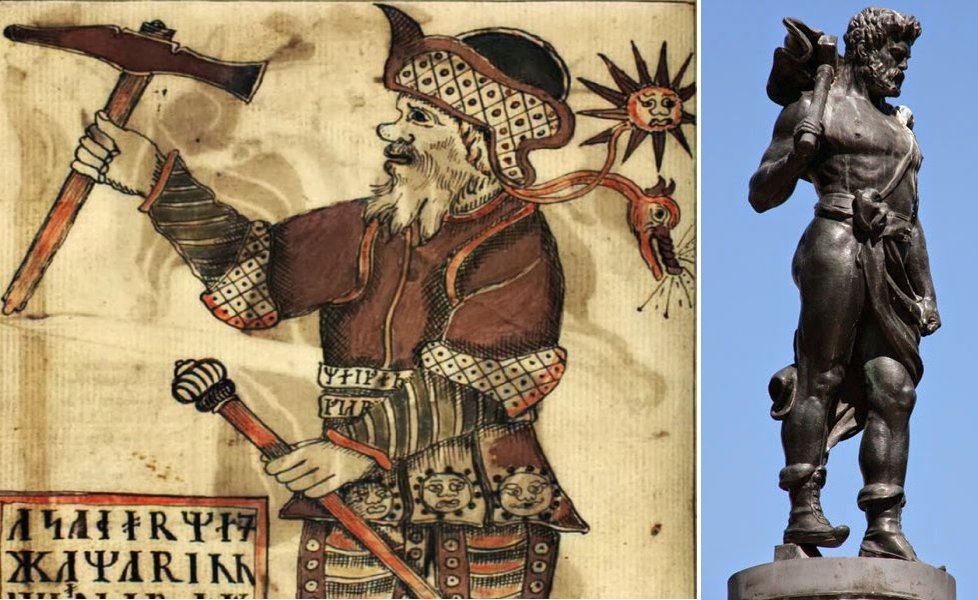Mjölnir: Thor’s Terrible Axe-Hammer And Its Magical Powers In Norse Mythology
A. Sutherland - AncientPages.com - Mjölnir (also known as Miölnir, Mjølne, Mjǫllnr) was a terrible ax hammer that belonged to Norse god Thor. The word Mjölnir means ‘crusher’ (or ‘striker’).
Thor was a righteous god who mastered thunder, storms, and lightning and had supernatural strength. He protected mankind, gods, and fertility and was renowned as the strongest, brave, and most warlike of the gods.
He was also known as the great slayer of the Jötuns, terrible giants who were sworn enemies of the gods in Asgard. The Jötuns lived in Jötunheimr, one of the nine worlds of Norse cosmology. Their home was also known as Utgard, which means “Beyond the Fence.”
Thor is considered a hero of the Vikings, and his hammer has long been the Vikings' amulet of protection and power.
In ancient art, Thor is depicted with Mjölnir, a magical hammer in his hand. The hammer’s only flaw was its short handle. Loki, known among the gods as a trickster and mischief-maker, was responsible for this defect.
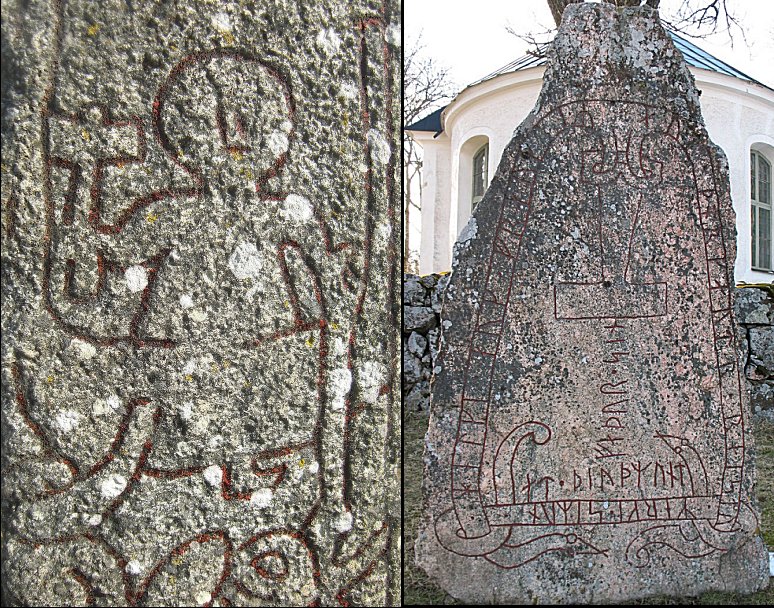
Left: Thor with Mjolnir depicted on the Altuna stone, Uppland; Sweden. Right: A runestone depicting Thor's hammer, Södermanland, Sweden.
As a result, Thor had to wear the magic glove or an iron gauntlet (‘Iarn-greiper’) to hold terribly red-hot Mjölnir in his hand. Thor also used a mysterious belt (Megingjardir) that would double his strength.
Yet, the magical hammer had many wonderful properties and was Thor’s formidable weapon against giants. Mjölnir was capable of leveling mountains and was so heavy that no one else could lift it from the ground. Regardless of distance, Mjölnir always returned to Thor’s hand, which could be squeezed into a smaller size and unexpectedly hidden away. Mjölnir could kill and destroy but also revive people or animals.
It was said to be forged by two dwarfs, Brokkr ( in Old Norse: ‘blacksmith’) and Eitri (‘spark-sprayer’), who both lived in the underground home of the dwarves, Svartalfheim and were widely known, skilled craftsmen and technicians who created many magical objects for the gods of Asgard.
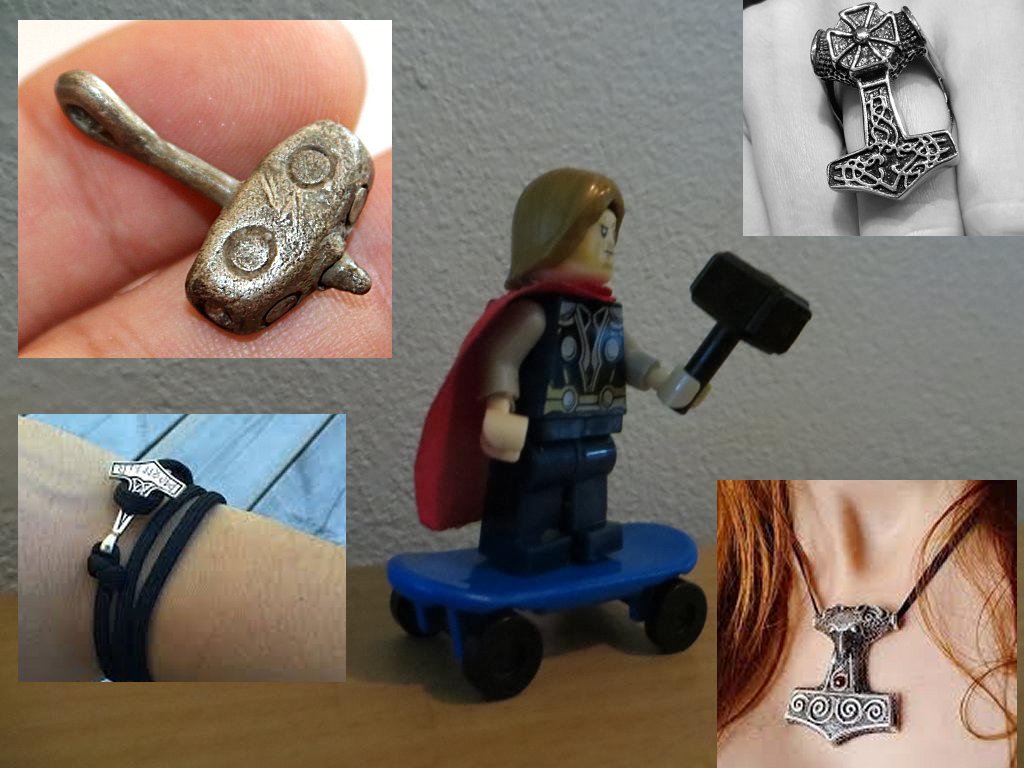
Mjölnir was a tremendous weapon capable of leveling mountains and so heavy that no one else could lift it from the ground.
The saga of Thor’s formidable weapon, which killed countless giants, continued even after Ragnarok, according to Snorri Sturluson's Prose Edda, ‘Skáldskaparmál.’ Mjölnir was in possession of the second generation of gods, who survived the catastrophic events of Ragnarok and were involved in the new world order.
Thor’s Hammer Mjölnir Widely Depicted By The Viking People Of Scandinavia
The memory of Mjölnir and its owner has survived through many generations. Thor’s hammer was frequently depicted on countless boundary stones and gravestones. It was frequently found at wedding ceremonies and raised over newborn children.
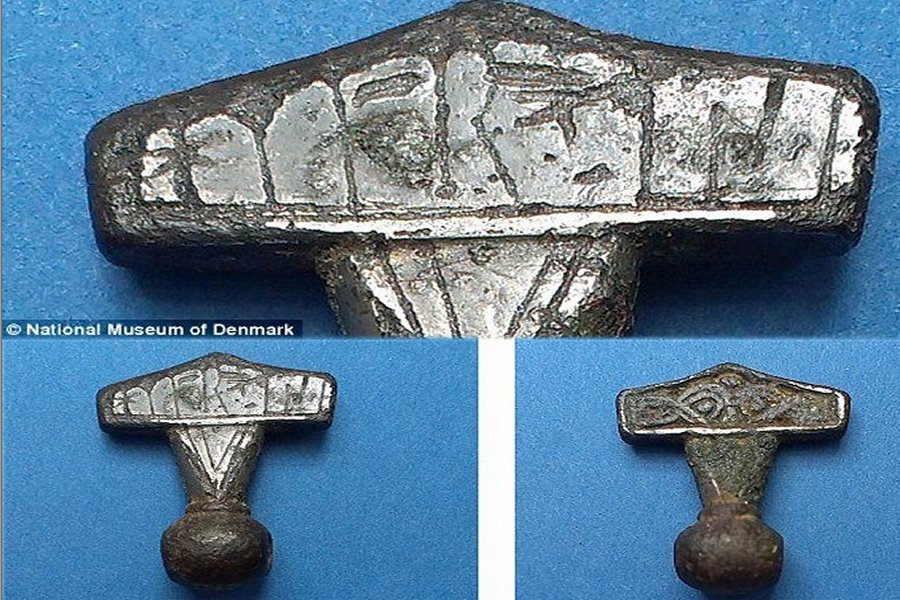
Unusual Hammer of Thor found in Denmark. .Both sides of the amulet are shown here, with runes seen on the left image. The latest find is unusual as it has runes inscribed that read ‘Hmar x is’ (‘This is a Hammer’)
Popular and respected miniature hammers are designed to be worn as pendants. Small silver amulets in the form of Mjölnir symbolize the greatness of Thor and his fight for the land.
Archaeological excavations revealed many of these artifacts.
Updated on January 26, 2023
Written by – A. Sutherland AncientPages.com Staff Writer
Copyright © AncientPages.com All rights reserved. This material may not be published, broadcast, rewritten or redistributed in whole or part without the express written permission of AncientPages.com
Expand for referencesReferences:
Hawthorne, Simon. Norse Mythology
Grimes, Heilan Yvette. The Norse Myths (p. 288). Hollow Earth Publishing. Kindle Edition.
Belton, J. H. An Encyclopedia of Norse Mythology
More From Ancient Pages
-
 What Happened To The Homo Sapiens In The Thar Desert When They Encountered The Indian Monsoon System
Archaeology | Oct 5, 2021
What Happened To The Homo Sapiens In The Thar Desert When They Encountered The Indian Monsoon System
Archaeology | Oct 5, 2021 -
 Denisovan DNA May Explain Why Tibetan Women Thrive In Low Oxygen At High Altitudes For Over 10,000 Years
DNA | Nov 18, 2024
Denisovan DNA May Explain Why Tibetan Women Thrive In Low Oxygen At High Altitudes For Over 10,000 Years
DNA | Nov 18, 2024 -
 Life Of Earliest Modern Humans In Europe Revealed By Excavations Conducted In Romania
Archaeology | Aug 24, 2022
Life Of Earliest Modern Humans In Europe Revealed By Excavations Conducted In Romania
Archaeology | Aug 24, 2022 -
 Secret Ancient Knowledge Of Venus – Ancient Gods, Giants And More Controversial Theories – Part 2
Ancient Mysteries | Jul 2, 2018
Secret Ancient Knowledge Of Venus – Ancient Gods, Giants And More Controversial Theories – Part 2
Ancient Mysteries | Jul 2, 2018 -
 Mysterious Object In Asuka – The Place Of ‘Flying Birds’
Civilizations | Aug 11, 2018
Mysterious Object In Asuka – The Place Of ‘Flying Birds’
Civilizations | Aug 11, 2018 -
 Fossils Of Mysterious Homo Naledi Change Our Understanding Of Evolution
Archaeology | May 10, 2017
Fossils Of Mysterious Homo Naledi Change Our Understanding Of Evolution
Archaeology | May 10, 2017 -
 Discovery Sheds Light On Why Pacific Islands Were Colonized
Archaeology | Apr 22, 2022
Discovery Sheds Light On Why Pacific Islands Were Colonized
Archaeology | Apr 22, 2022 -
 Prehistoric Humans Recycled Old Stone Tools To Preserve The Memory Of Their Ancestors
Archaeology | Mar 17, 2022
Prehistoric Humans Recycled Old Stone Tools To Preserve The Memory Of Their Ancestors
Archaeology | Mar 17, 2022 -
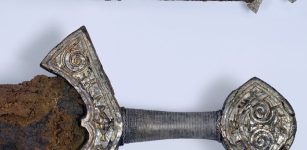 Mystery Of The Langeid Viking Sword And Its Undeciphered ‘Magical’ Inscriptions
Artifacts | Jun 4, 2022
Mystery Of The Langeid Viking Sword And Its Undeciphered ‘Magical’ Inscriptions
Artifacts | Jun 4, 2022 -
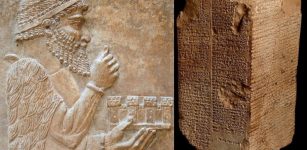 Meskiaggasher: Legendary Founder Of The First Dynasty Of Uruk Who ‘Entered The Sea And Disappeared’
Featured Stories | Apr 20, 2021
Meskiaggasher: Legendary Founder Of The First Dynasty Of Uruk Who ‘Entered The Sea And Disappeared’
Featured Stories | Apr 20, 2021 -
 Zapotecs’ Magnificent City Of Mitla Was Destroyed By A Seismic Landslide
Archaeology | Aug 23, 2024
Zapotecs’ Magnificent City Of Mitla Was Destroyed By A Seismic Landslide
Archaeology | Aug 23, 2024 -
 On This Day In History: Adventurer Thor Heyerdahl And His Kon-Tiki Reached French Polynesia – On August 7, 1947
News | Aug 7, 2016
On This Day In History: Adventurer Thor Heyerdahl And His Kon-Tiki Reached French Polynesia – On August 7, 1947
News | Aug 7, 2016 -
 Ancient Trade Routes Between Iran And Mesopotamia – Uncovered
Archaeology | Dec 4, 2015
Ancient Trade Routes Between Iran And Mesopotamia – Uncovered
Archaeology | Dec 4, 2015 -
 Why Did Socrates Drink Poison And Commit Suicide?
Ancient History Facts | Apr 21, 2018
Why Did Socrates Drink Poison And Commit Suicide?
Ancient History Facts | Apr 21, 2018 -
 Aristotelian Thought Is Being Revived In Lyceum – Ancient School Founded By The Greek Philosopher
News | Jan 30, 2023
Aristotelian Thought Is Being Revived In Lyceum – Ancient School Founded By The Greek Philosopher
News | Jan 30, 2023 -
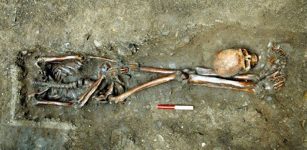 Secrets Of Ancient Skeletons Found In York – Who Were They And Where Did They Come From?
Archaeology | Jan 20, 2016
Secrets Of Ancient Skeletons Found In York – Who Were They And Where Did They Come From?
Archaeology | Jan 20, 2016 -
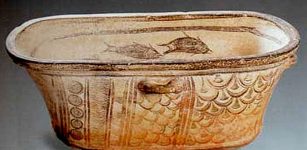 Was Hygiene Important For Our Ancestors?
Featured Stories | Feb 11, 2017
Was Hygiene Important For Our Ancestors?
Featured Stories | Feb 11, 2017 -
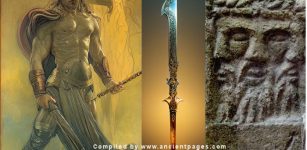 Lugh – Mighty God Of Light, Sun And Crafts In Celtic Beliefs
Celtic Mythology | Apr 30, 2018
Lugh – Mighty God Of Light, Sun And Crafts In Celtic Beliefs
Celtic Mythology | Apr 30, 2018 -
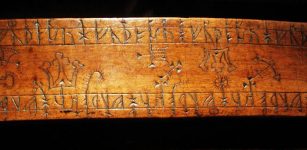 Vikings And The Runic Calendar
Artifacts | Mar 4, 2016
Vikings And The Runic Calendar
Artifacts | Mar 4, 2016 -
 Mythical Place Where Gorgon Medusa Dwelled And Was Killed May Have Been Found By Archaeologists
Featured Stories | Sep 15, 2024
Mythical Place Where Gorgon Medusa Dwelled And Was Killed May Have Been Found By Archaeologists
Featured Stories | Sep 15, 2024

